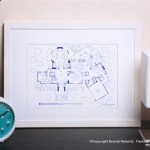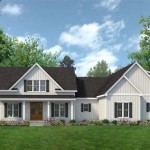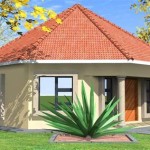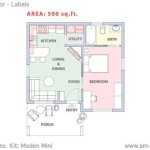Home Plans With Mother-In-Law Apartment: A Comprehensive Guide
The concept of multi-generational living is experiencing a resurgence, driven by economic factors, cultural shifts, and a desire for closer family connection. A key component of facilitating this type of living arrangement is the inclusion of a mother-in-law apartment, also known as an accessory dwelling unit (ADU) or in-law suite, within a home's overall design. These self-contained living spaces offer privacy and independence for aging parents, adult children returning home, or even potential rental income opportunities. This article explores various home plan options incorporating mother-in-law apartments, the benefits they offer, and crucial considerations for successful implementation.
Designing a home with a mother-in-law apartment requires careful consideration of several factors. These include the specific needs of the intended occupant, local zoning regulations, budget constraints, and the overall aesthetic of the main house. The integration of the apartment should be seamless, providing both a sense of privacy and connection. A well-designed in-law suite can significantly enhance the value and functionality of a home, offering a versatile solution for diverse family needs.
The increasing popularity of mother-in-law apartments reflects a significant shift in housing preferences. Families are increasingly seeking housing solutions that accommodate multiple generations under one roof, allowing for shared responsibilities, mutual support, and reduced living expenses. These apartments provide a valuable option for families looking to balance independence and proximity.
Key Point 1: Types of Home Plans Featuring Mother-In-Law Apartments
There are several distinct approaches to incorporating a mother-in-law apartment into a home plan. Each approach offers unique advantages and suits different lot sizes, architectural styles, and family needs. Understanding these different types is crucial for selecting the most appropriate design.
Attached ADUs: This is perhaps the most common type. The ADU is physically connected to the main house, sharing a common wall or roofline. This configuration often involves converting an existing garage, finishing a basement, or adding an extension to the side or rear of the house. Attached ADUs are advantageous because they typically require less land and can be easily integrated into the existing structure. The shared utilities can also simplify plumbing and electrical connections. The connection to the main house can also provide a greater sense of security for the occupant of the ADU.
Detached ADUs: Also known as backyard cottages or granny flats, these are separate, self-contained structures located on the same property as the main house. They offer the highest degree of privacy and independence. Detached ADUs require their own separate entrance, utilities, and often, dedicated parking. This option is ideal for families who prioritize privacy and want to maintain a clear separation between living spaces. However, detached ADUs typically require more land and are subject to more stringent zoning regulations.
Above-Garage ADUs: These units are constructed above an existing or newly built garage. This configuration is a space-efficient solution, maximizing the use of existing land. Access to the ADU is typically provided via an external staircase. Above-garage ADUs offer a balance between privacy and proximity, and they can be a cost-effective option if the garage structure already exists.
Internal ADUs: In some cases, an existing portion of the main house can be converted into a self-contained apartment. This might involve finishing an unfinished basement or converting a portion of the main floor into a separate living space. Internal ADUs require careful planning to ensure adequate soundproofing and privacy, but they can be a convenient and cost-effective option if the existing space is suitable.
The choice between these types will depend on the specific circumstances of the homeowner, the available land, and local zoning ordinances. Careful consideration of these factors is essential for a successful and compliant implementation.
Key Point 2: Design Considerations for Optimal Functionality
Beyond the structural configuration, several design elements are crucial for ensuring the functionality and comfort of a mother-in-law apartment. These elements contribute to the occupant's sense of independence and well-being, while also complementing the overall aesthetic of the main house.
Accessibility: If the ADU is intended for an elderly or disabled occupant, accessibility is paramount. This includes features such as a zero-step entrance, wider doorways and hallways, grab bars in the bathroom, and a roll-in shower. Universal design principles should be incorporated to ensure that the space is usable and comfortable for individuals of all abilities. Consider the placement of light switches and outlets, ensuring they are easily reachable. Also consider the type of flooring. It should be slip resistant, and provide good traction.
Privacy: Maintaining privacy is essential for both the occupant of the ADU and the residents of the main house. This can be achieved through strategic placement of entries and windows, soundproofing measures, and landscaping that provides visual separation. The ADU should have its own dedicated entrance separate from the main house. Soundproofing materials can be used in walls and ceilings to minimize noise transmission. Landscaping can be used to create a visual barrier, such as a fence or hedge.
Kitchen and Bathroom Facilities: A fully functional kitchen and bathroom are essential for creating a self-sufficient living space. The kitchen should include a refrigerator, stove, microwave, sink, and adequate counter space. The bathroom should include a toilet, sink, and shower or bath. The size and features of these facilities will depend on the size of the ADU and the needs of the occupant. Consider energy efficient appliances to minimize utility costs.
Living Space and Bedroom: The ADU should include a comfortable living area and a separate bedroom. The living area should be large enough to accommodate seating and a television. The bedroom should be large enough for a bed, dresser, and closet. Adequate natural light and ventilation are important for creating a comfortable and inviting living space. Consider the placement of windows to maximize natural light and views.
Storage: Adequate storage space is essential for maintaining an organized and clutter-free living environment. This can include closets, cabinets, and shelving. Consider built-in storage solutions to maximize space. Exterior storage may also be beneficial for storing seasonal items or outdoor equipment.
Utilities: The ADU should have its own separate utilities, including electricity, water, and gas. This allows the occupant to control their own energy consumption and avoid disputes over utility bills. Separate meters should be installed for each utility. Alternatively, sub-metering can be used to track the utility consumption of the ADU.
Key Point 3: Legal and Regulatory Considerations
Before embarking on the construction of a mother-in-law apartment, it is crucial to thoroughly research and comply with all applicable legal and regulatory requirements. These requirements vary significantly depending on the locality and can impact the feasibility and cost of the project.
Zoning Regulations: Zoning ordinances dictate the types of structures that are permitted on a particular property. Many jurisdictions have specific regulations regarding ADUs, including restrictions on size, height, setbacks, parking, and occupancy. It is essential to consult with the local planning department to determine whether an ADU is permitted on the property and what restrictions apply. Ignorance of zoning regulations can result in costly fines or even the forced removal of the ADU.
Building Codes: Building codes ensure the safety and structural integrity of the ADU. These codes specify requirements for materials, construction methods, electrical wiring, plumbing, and fire safety. A building permit is typically required before construction can begin, and inspections are conducted throughout the construction process to ensure compliance with the code. Failure to comply with building codes can result in safety hazards and legal liabilities.
Permitting Process: The permitting process involves submitting plans and applications to the local building department for review and approval. The process can be complex and time-consuming, requiring detailed drawings, site plans, and engineering calculations. It is often advisable to hire a qualified architect or contractor to assist with the permitting process. The permitting process ensures that the proposed ADU meets all applicable zoning and building code requirements.
Homeowners Association (HOA) Restrictions: If the property is located within a homeowners association, there may be additional restrictions on ADUs. These restrictions may include limitations on size, design, and occupancy. It is essential to review the HOA covenants and restrictions before proceeding with the project. Failure to comply with HOA restrictions can result in fines or legal action.
Rental Regulations: If the ADU is intended for use as a rental unit, there may be additional regulations governing rental properties. These regulations may include requirements for landlord-tenant agreements, safety inspections, and tenant screening. It is essential to comply with all applicable rental regulations to avoid legal liabilities.
Navigating these legal and regulatory considerations can be challenging, but it is essential for ensuring a successful and compliant ADU project. Consulting with experienced professionals, such as architects, contractors, and attorneys, can help to avoid costly mistakes and ensure that the project meets all applicable requirements.
The trend of incorporating mother-in-law apartments into home plans is set to continue as families seek more flexible and adaptable housing solutions. By carefully considering the design, functionality, and legal aspects, homeowners can create valuable living spaces that enhance the quality of life for themselves and their loved ones.

Homes With Mother In Law Suites

In Law Suite Plans Give Mom Space And Keep Yours The House Designers

Plan 65862 Tuscan Style House Floor Plans With 2091 Sq Ft 3 Be

Gorgeous Craftsman House Plan With Mother In Law Suite 890089ah Architectural Designs Plans

In Law Suite Plans Give Mom Space And Keep Yours The House Designers

Rising Trend For In Law Apartments Brick House Plans Bungalow Modular Home Floor

Sullivan Home Plans June 2010 House One Story Best Dream

Two Story 6 Bedroom French Country House With In Law Suite Plan

One Story With In Law Suite Plan 2286

Spacious Design With Mother In Law Suite 5906nd Architectural Designs House Plans








